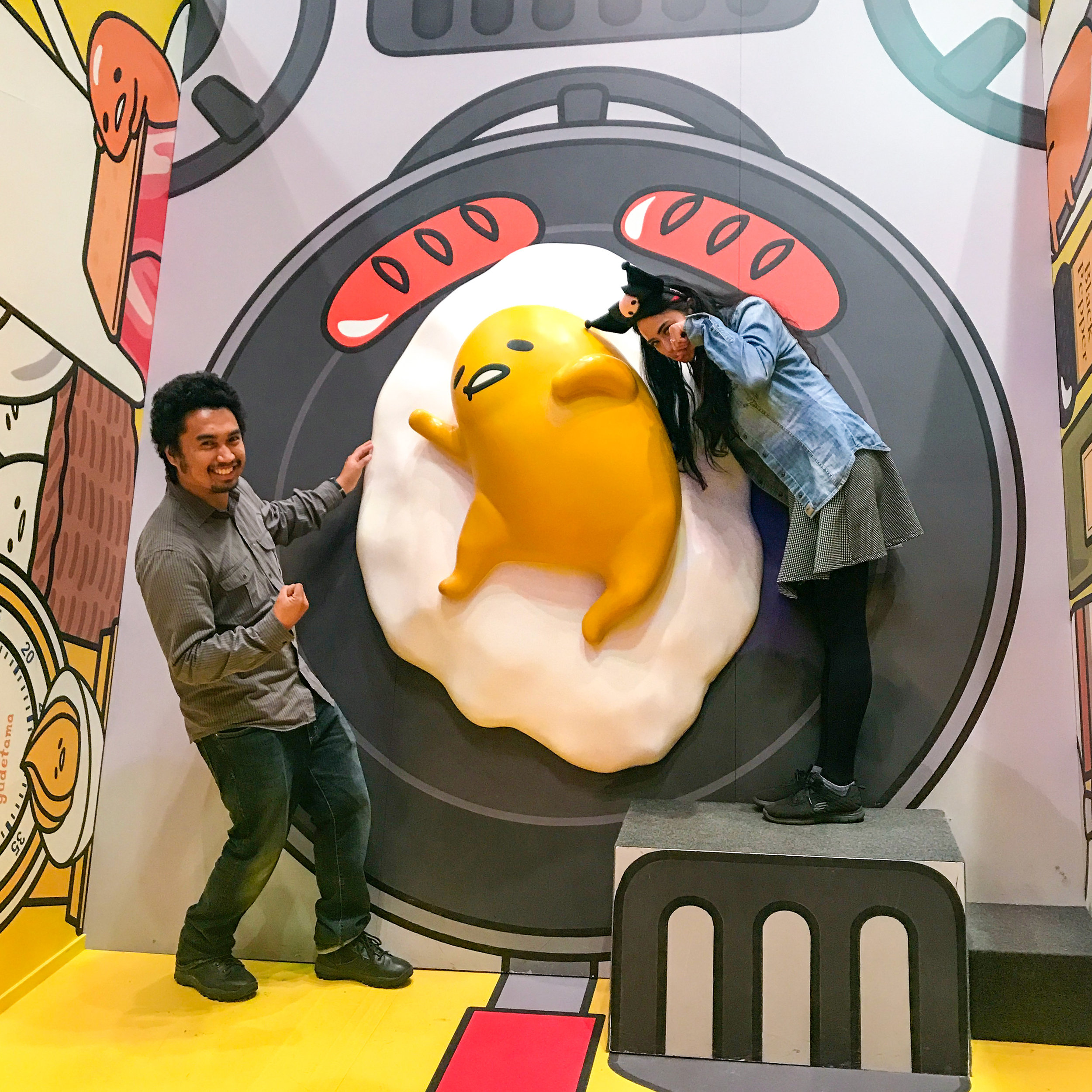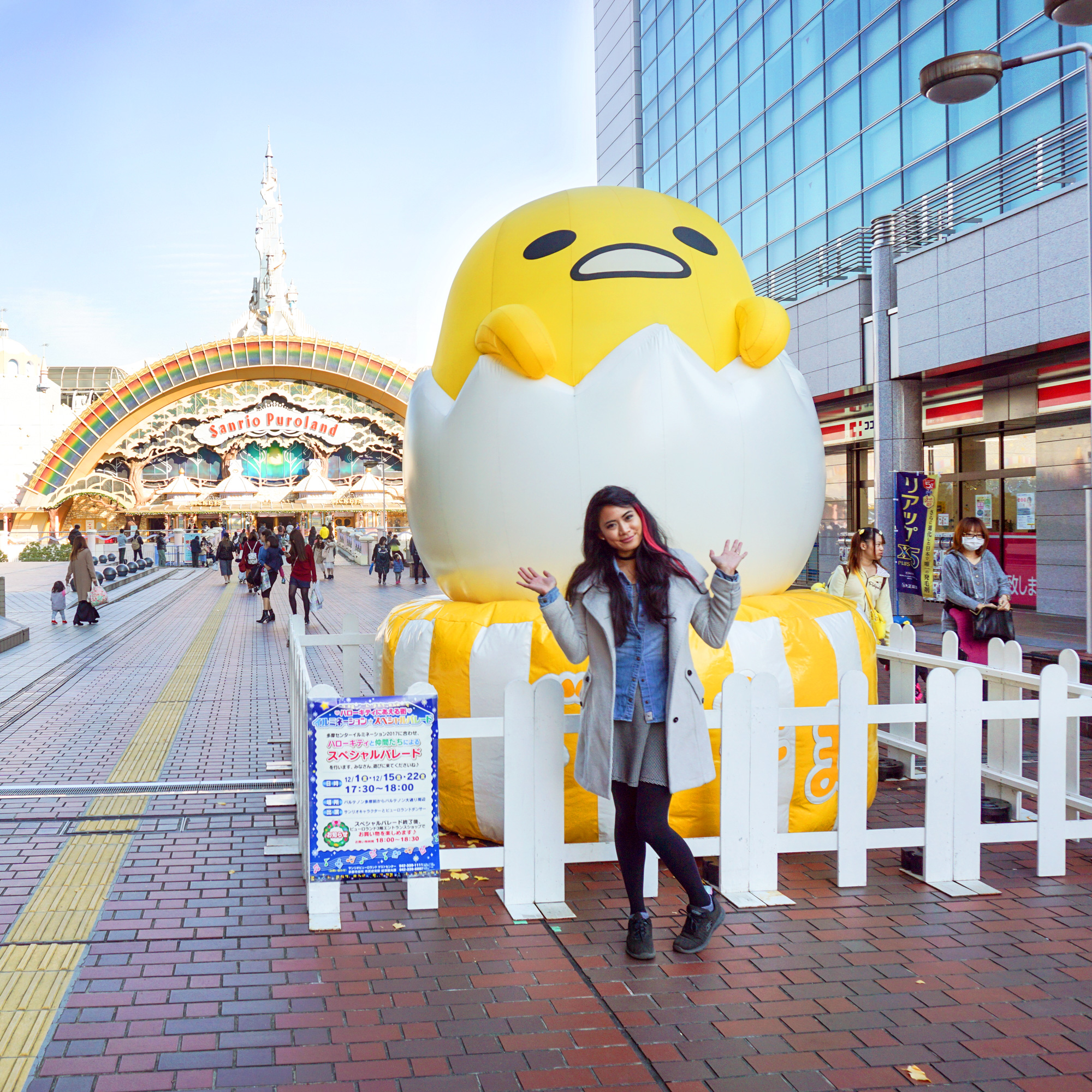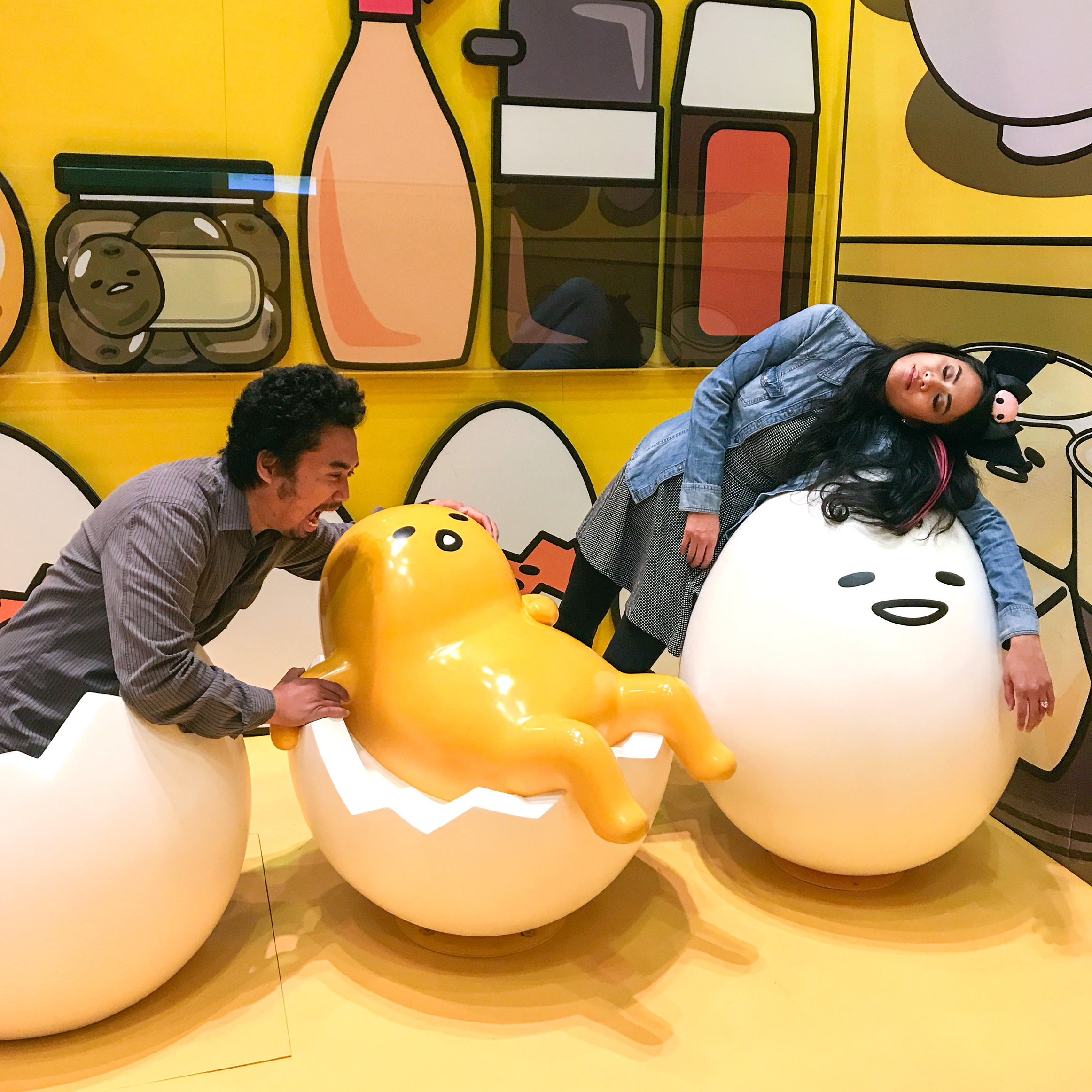JAPAN EATS: Kawaii Food
Taken at Puroland in Tama, Japan.
Dear Foodie Fam,
In the ‘Nation of Cute’, there’s mascots for everything, even food.
The History of “Kawaii” (cuteness)
In the 1970s, as a reaction to hard-line post-WWII culture, Japanese teens were protecting vulnerability. Grasping childlike innocence, school kids started a trend of writing in cute, rounded handlettering with lots of hearts and other doodles. It was called lots of things like marui ji (round writing), koneko ji (kitten writing), and burikko ji (fake-child writing). Though banned at first, the lettering and the overall culture of embracing childlike aesthetics gained traction. “Kawaii” culture embraces the depiction of sweet, unassuming childlike innocence.
Character art did Kawaii culture a solid by being animated to exude and champion positivity. Hello Kitty is the standard of all that is kawaii- innocent, pure and vulnerable. In 1974, she helped start the wave of cuteness that she is still riding…
Today, character art comes in the form of mascots for corporate branding … and for entire subcultures. With Japanese Millennials -called Yutori Sedai (the pressure-free generation)- staying at home and saving their own money, there’s money to be blown on characters Millennials identify with.
There’s lots of Kawaii subcultures. Here’s a few:
Kimo-Kawaii (Creepy Cute) Taking what is normally not cute (like creepy things) and revering it as cute. Since the 1990s, it’s drawn on American subversive contemporary art culture and anything within Japanese pop culture. It influences film, music and even the creation of mascots for local government, post offices and tax filing programs.
It includes the “gross.” As a fan of contemporary art-esque kawaii concepts, I’m fascinated with kitschy cute. One of my favorite artists of all time, Yoshitomo Nara, is a godfather in the kimokawaii-inspired art world and influenced much of my personal work… So I do have my own ideas of why kimokawaii works… The best way I can personally describe kimokawaii is that some things are so ugly, gross or hopeless that they appear naive, pitiful and helpless… and that’s when you want to cuddle it and shield it from the world! I can argue that some of the same things that make characters like Hello Kitty so famous are present in kimokawaii characters. Kimokawaii characters sometimes look just as childlike in their facial features as kawaii characters do. They may still have the signature disproportionally large foreheads, big eyes, small noses, and lack of emotional expression… and it’s that almost cold void of emotion that makes all mascots magical… because the most intriguing mascots allow the viewer to project whatever they desire to project on them.
Guro-Kawaii (Grotesque Cute): Gloomy Bear is the perfect poster child for this. I know for sure Gloomy Bear has made appearances here in America through fashion and the vinyl art toy culture. He’s a pink bear known for slaughtering his owner… but he’s cute…? Americans who don’t know about Gloomy Bear may still understand guro-kawaii if they watch any Happy Tree Friends episodes or Netflix and Sanrio’s new Aggretsuko series (which I’m a huge fan of).
You’ve also got ero-kawaii (erotic cute) and busu-kawaii (ugly cute)
Kawaii-ish Food
The Japanese love food. According to Boutique Japan, “traditional Japanese cuisine (washoku) has been recognized by UNESCO as an Intangible Cultural Heritage of Humanity. Foodie honeymoons are becoming a thing. There’s different ways to eat in Japan that elevate eating to a whole artistic experience (read about that, here).
Japanese cuisine has for centuries communicated through taste and sight.
Dig into Japanese history and you’ll find dishes visually crafter to communicate pop-culture and current events. There’s been fine art found from the 15th century depicting epic -and symbolic- wars between food characters . For generations, folktales have told of part-human-part-food creatures like Momotaro (Peach Boy). A good 600 years ago, food for samurais was crafted with inspiration from literature (honzen ryori). Then, 500 years ago, meals started reflecting the seasons with ornamentation resembling falling leaves (kaiseki). Seasons are still communicated visually through Japanese dishes.
Today, with Kawaii aesthetics as a standard, dishes are made to look kawaii.
Japanese cafes are notorious for embracing what is cute. They have cafes themed on The Peanuts, Alice in Wonderland, Moomin, Peter Rabbit, Totoru, Pompompurin, Sailor Moon, Miffy, hedgehogs, cats, bunnies and goats… Food art at these cafes reflect that cuteness. Chefs are having to plate food in new cute ways to stay competitive and in the public eye. The Kawaii Monster Cafe in Harajuku is a great example of a Japanese eatery heavily influenced by kawaii culture (specifically, kimokawaii).
Today, there’s charaben. This is the art of character bento! Mothers are starting to show affection to their kids by crafting lunches that are both delicious and kawaii! Wow- talk about pinterest moms…! Charaben is hitting social media hard and I admit to following dozens of charaben feeds and artists online.
Food-ish Kawaii?
Kawaii feeds like a parasite clinging to whatever is worshipped in large communities like social media platforms…and guess what millennials love to share on social media? Since kawaii culture grabs whatever is “trending” and foodie culture is definitely on the rise, food-inspired kawaii is, too.
In Japan, the OG food character is the superhero, Anpanman. Made in the 1970s, he’s a bean paste filled bread roll with friends made of white bread and buns.
Later when kawaii subcultures were gaining popularity, Japanese stationery company San-X decided to make Kogepan. He’s a burnt, inconsolable bun that gets drunk off milk because he just wants to be bought. Kogepan now has more San-X food Family: Amagurichan (chestnut), a Cheese Family, Ginshari-san (rice grain), Goringo (yellow and red apples), Kinakochan and Ankochan (soy bean flour and red bean paste), Mamepyon (pea family), Mikanbouya (tangerine candy), Soreike Otamachan (onion), Tenshinchan (dimsum), Tomatorichan (red tomato), Tsurutsuru Ramnechan (ramen), Yōguru-kun (yogurt) and Yunomichan (tea).
Japanese stationery companies have animals shaped as food and food shaped as animals. Momobuta is a peach pig, San-X Nyan Nyan Nyanko are tiny cats dressed as food and Bananya is a banana cat…
For years, I was a Nyan Nyan Nyanko fan eventhough I’m not really into cats. However, since 2014, I’ve had a different favorite kawaii food character…
Gudetama: My favorite Kawaii Food
In 2014, Sanrio decided to enter the fray. Food themes have always graced their character art but now they wanted an actual food character. There were 20 food characters up for election. There were icecream alpacas, mochi dogs, meditative leeks and panda rice balls. After voting, Kirimi-Chan was crowned the winner. He’s essentially a Salmon Fillet with eyes and legs.
Kirimi-Chan products were made and distributed but the runner up -whose products were also made and distributed- was really the winner of most hearts and most wallets.
These photos are from my happy romp through the Gudetama section of Puroland in Tama, Japan.
Gudetama is an egg with a butt, a bacon blanket, and a lazy AF demeanor. It’s name literally means “lazy egg.” It’s tortured, sleepy soul speaks to me and many of the millennials Sanrio skillfully targeted.
Gudetama is always whining and sighing in a breathy high-pitched voice: “Ugh,” “Meh,” “Leave me alone and “I can’t.”
Taken in the Gudetama section of Puroland in Tama, Japan.
Talk about kimokawaii- sometimes Gudetama appears as a yolk on eggwhite but other times, it’s cooked as tamago nigiri, a soufflé, an omelette, scrambled, sliced, boiled… whining all the time…
It’s all existentialism, really. Gudetama has unrealized potential. It can become so many different things (dishes). It’s in fact unfertilized and doesn’t even have a determined gender. This is where an egg can really wrestle with meaning: To become one of so many things, Gudetama has to be cooked and eventually consumed… So I see why all it endeavors to do is sleep, wiggle and whince.
While Gudetama’s apathy can be identified by many earlier generations as very millennial, let’s consider that in a world where standards of education and work ethic are more demanding than ever, the world needs catharsis from societal pressure. Gudetama has become our hero. He like SanX’s Rilakkuma, is an example of “yuro-kawaii” (“calm cute”).
So stupid, I think, to be called “Yutori Sedai” (the pressure-free generation)… yes, many of us do stay home longer but we live in a world that demands a higher standard of education, varied yet skilled experience, and work ethic than ever before. In today’s world, by the minute, we are bombarded with news of war, violence, tragedy, discrimination, injustice and chaos. For God’s sake, “adulting” is a term that now exists to explain away mounting expectations of maturity. We crave tea, yoga, meditation and self care. We crave release… Gudetama offers some release.
This is the height of what kawaii encapsulates: Gudetama is our sweet, harmless, innocent little friend who understands us. He’s so vulnerable he’s always naked and shivering. He’s so baby-like, he has no neck movement and won’t even move without prompting . He’s innocent, he’s too busy sleeping to cause anyone harm…. And like us, he’s so weary with existential dread that he can’t even.
Taken in the Gudetama section of Puroland in Tama, Japan.
Taken at Puroland in Tama, Japan.
Taken at Puroland in Tama, Japan.













